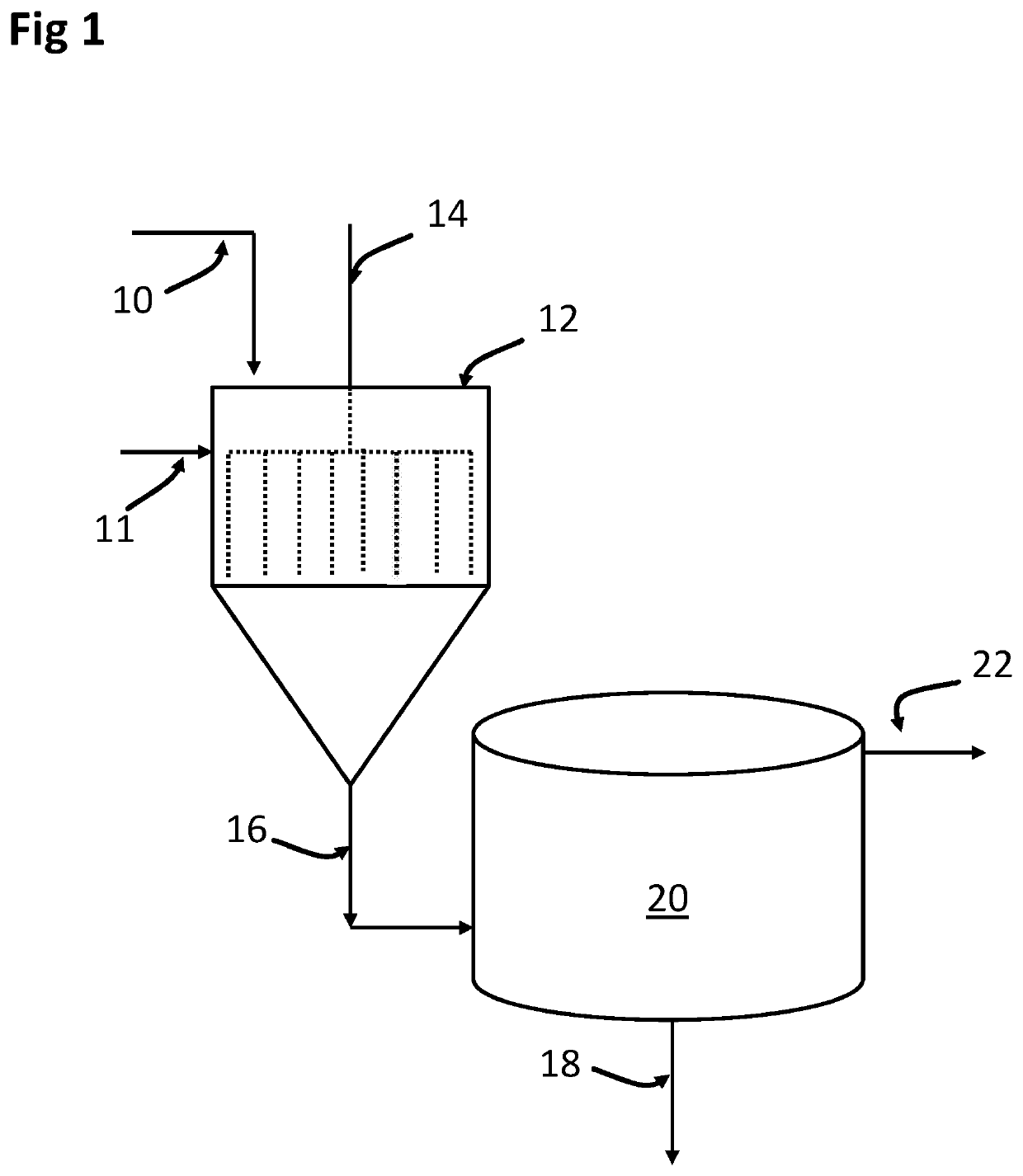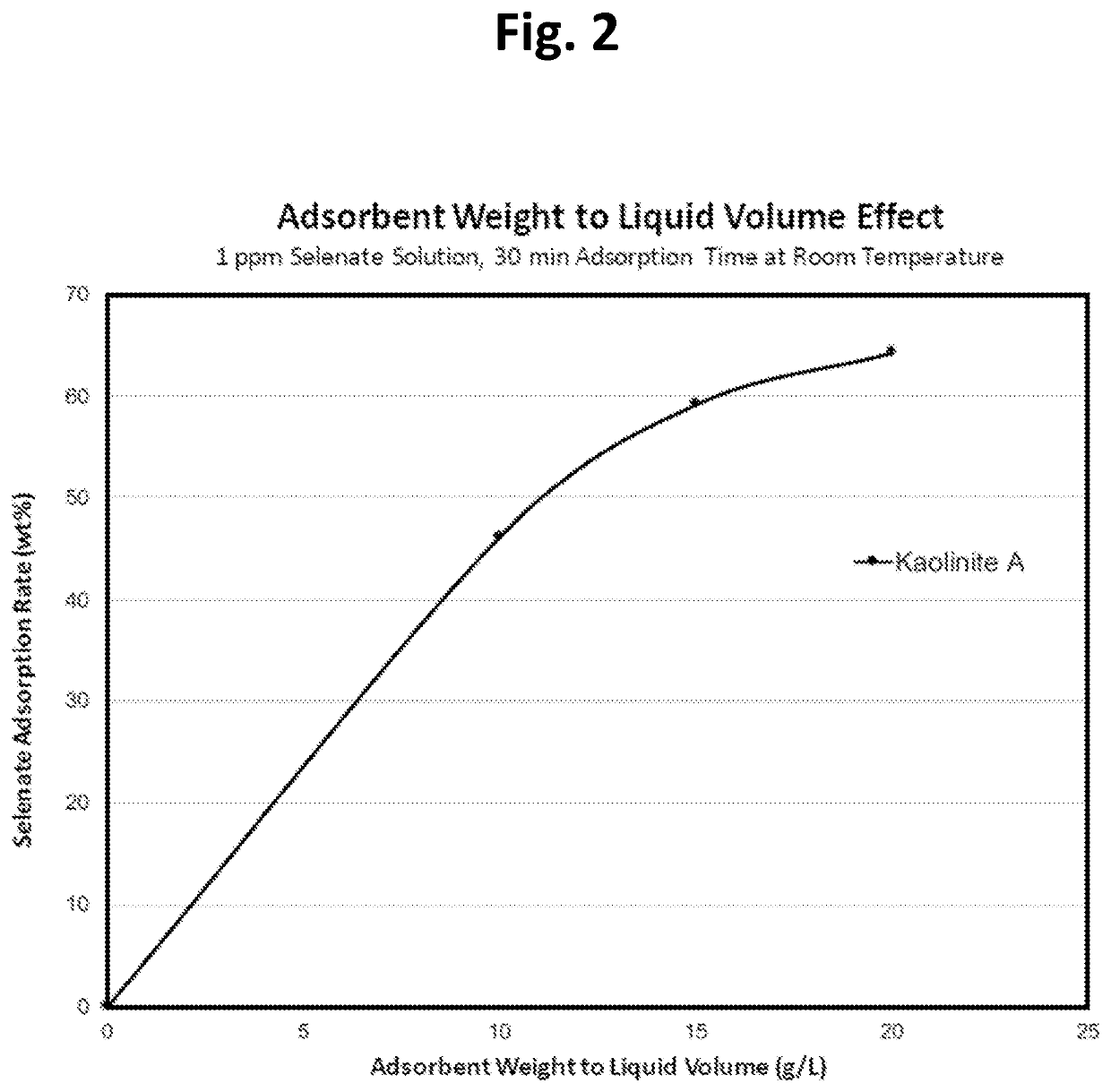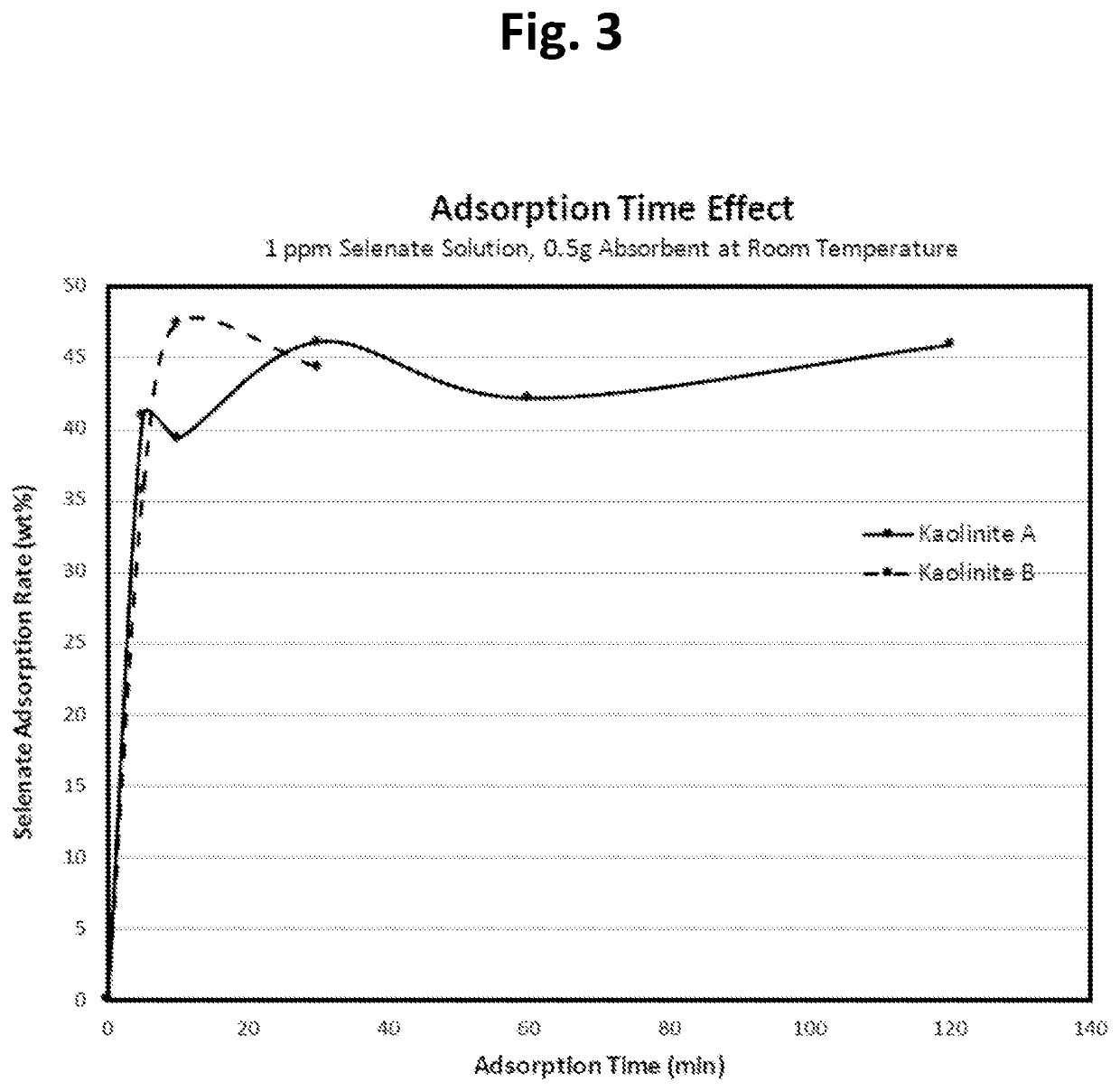Removal of selenium from water with kaolinite
a technology of selenium and kaolinite, which is applied in the direction of water/sludge/sewage treatment, other chemical processes, chemistry apparatus and processes, etc., can solve the problems of less selenium, more complex problems posed by selenium, and high concentration of selenium, so as to mitigate the problem of selenium in different wastewater treatmen
- Summary
- Abstract
- Description
- Claims
- Application Information
AI Technical Summary
Benefits of technology
Problems solved by technology
Method used
Image
Examples
example 1
[0056]This example compares several commercial forms of kaolinite for their effectiveness in removing selenate from water with other types of solid adsorbents for selenate removal.
[0057]Table 1, below, summarizes the results of soluble selenate adsorption [SeO42−] on different solid adsorbents commonly used at the same test conditions (e.g., 0.5 g of adsorbent added in 50 ml of 1 ppm selenate solution for 30 min adsorption time at room temperature). In the table, A, B and C denote the same type of adsorbent but from either different suppliers or different products of the same supplier. Kaolinite A and B show very good selenate adsorption rates than the others except the activated carbon. Activated carbon is known to be an excellent sorbent for wide varieties of chemicals in water and has been used for water purification commercially for a long time.
[0058]
TABLE 1Screening Results of Selenate Adsorptionon Different Solid Adsorbents in WaterResidual SeSe (VI)(VI)AdsorptionpH AfterAbsor...
example 2
[0060]This example tests the effectiveness of several materials to see whether there are differences among commercially available kaolinite materials for selenate adsorption. We tested several different kaolinite products from a single supplier, one of the largest kaolinite providers in US, at the same experimental conditions (e.g., 0.5 g of absorbent added in 50 ml of 1 ppm selenate solution for 30 min adsorption time at room temperature) and the results were listed in Table 2 below. The results indicate that there are large differences among these samples.
[0061]
TABLE 2Screening Results of Selenate Adsorptionon Different Kaolinite Samples in WaterSe (VI) AdsorptionpH of Adsorbent inAbsorbentRate wt %Water*Kaolinite A46.124.90Kaolinite B42.765.05Kaolinite V1.536.67Kaolinite W−1.777.22Kaolinite Y1.966.78Kaolinite Z−1.876.26*pH values at 0.5 g absorbent in 50 ml DI water before Se(VI)
Kaolinite A and B show much higher selenate adsorption rates than other kaolinite samples and a series...
example 3
[0063]This example simply shows that increasing the sorbent dosage while keeping everything else constant (e.g., Selenate concentration and liquid volume) will increase the selenate adsorption rate, as indicated in Table 3 below. The amount of kaolinite A is the only changed factor (e.g., 0.5 g / 0.75 g / 1.0 g kaolinite A in 50 ml of 1 ppm selenate solution for 30 min at room temperature) and the results show that doubling the dosage of kaolinite A increases about 39% selenate absorption (from 46.12% to 64.24%, see Table 3), indicating that there is a maximum limit for kaolinite A adsorption of selenate (FIG. 2). The maximum rate is about 65% for 1 ppm selenate at the experimental conditions of tests (50 ml liquid volume, etc.)
[0064]
TABLE 3Relation between Selenate Adsorption Rateand Adsorbent Weight to Liquid Volume RatioKaolinite A / WaterResidual Se (VI)Se (VI) AdsorptionVolume (g / L)Content (μg / g)Rate wt %Baseline - No Adsorbent1.0430.00100.56246.12150.42659.16200.37364.24
[0065]Beside...
PUM
| Property | Measurement | Unit |
|---|---|---|
| pH | aaaaa | aaaaa |
| pH | aaaaa | aaaaa |
| temperature | aaaaa | aaaaa |
Abstract
Description
Claims
Application Information
 Login to View More
Login to View More - R&D
- Intellectual Property
- Life Sciences
- Materials
- Tech Scout
- Unparalleled Data Quality
- Higher Quality Content
- 60% Fewer Hallucinations
Browse by: Latest US Patents, China's latest patents, Technical Efficacy Thesaurus, Application Domain, Technology Topic, Popular Technical Reports.
© 2025 PatSnap. All rights reserved.Legal|Privacy policy|Modern Slavery Act Transparency Statement|Sitemap|About US| Contact US: help@patsnap.com



